Here in this post, I'll be mentioning some of the open-back headphones that you can buy now.
| # | Product | Frequency response | Drivers | Amazon product page |
| 1 | Shure SRH1840 | 10 Hz to 30 kHz | 40 mm neodymium drivers | Check price |
| 2 | Sennheiser HD 700 | 10 Hz to 42 kHz | 40 mm drivers | Check price |
| 3 | Sennheiser HD 600 | 12 – 39000 Hz | 40 mm drivers | Check price |
| 4 | AKG Q701 | 40 Hz to 15 kHz | High-performance 40 mm neodymium magnets | Check price |
| 5 | Philips X2/27 Fidelio | 5 – 40 000 Hz | Powerful 50mm neodymium drivers | Check price |
| 6 | Beyerdynamic DT 990 PRO | 5 – 35.000 Hz | 45mm drivers | Check price |
| 7 | Sennheiser HD 598 | 12- 38,500 Hz | Powerful 50mm drivers | Check price |
| 8 | AKG Acoustics K701 | 10Hz-39.8kHz | 45mm drivers | Check price |
| 9 | Audio-Technica ATHAD700X | 5-30,000 Hz | 53 mm drivers | Check price |
| 10 | GRADO SR80e | 20 – 20,000 Hz | 40mm dynamic drivers | Check price |
| 11 | Philips SHP9500 | 12-35 000Hz | 50mm neodymium drivers | Check price |
| 12 | Koss UR40 | 10-20,000 Hz | 42mm drivers | Check price |
| 13 | LyxPro OEH-10 | 15 – 30KHz | 42mm drivers | Check price |
If you are an audiophile, the fact is that the open-back headphones offer you exceptional sound quality. The details of the playback will be better than that of closed ones due to the open design of the headphones.
They also offer excellent comfort and less tightness. They simply sit over your ears as they don't have to isolate the sound. Here comes the major drawback of open-back headphones.
They leak the sound to and fro. Many of them still manage to block out ambient noise from entering the playback. They are not suitable to be used in a too noisy environment or in silent public places like libraries.
These open design headphones are used extensively by gamers and studio junkies for mixing. Whether you may be a gamer or a music producer, there are some of the things you need to consider before buying these headphones.
Buying guide for open-back headphones
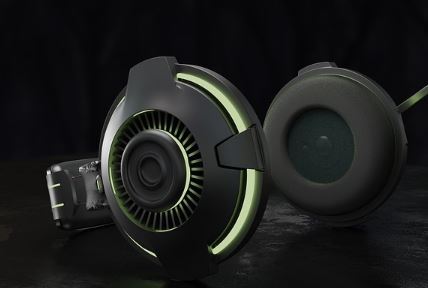
Sound isolation:
As I said to you earlier, open-back headphones are generally pretty bad at sound isolation. They are not quite suitable to use in potentially quite public environments where it disturbs others.
However, some of the good open-back headphones do keep the sound leakage under control although not as effective as closed cans.
They effectively block out ample background noise and keep the sound leakage to a low level.
You can't expect complete noise isolation with these open design headphones.
At high volumes, sound especially the treble part leaks out a lot and you seem like a weirdo with loudspeakers mounted to his ears. This is a common issue with every open-back headphones.
Sound quality:
Although open design headphones offer exceptional details of the playback, you need to make sure that you are buying a good pair with good sound quality.
Some headphones perform great in the low-frequency range and others in the treble range. If you love your headphones to deliver excellent vocal details, you need to look for headphones are perform well especially in the mid and high-frequency range.
You may also want to look at the frequency graph, and make sure that the headphones have a flat frequency response to ensure high fidelity (accuracy) in the playback.
This is very important if you consider using the headphones for mixing purposes and love to hear pure music.
Comfort:
The earcups and the headband should be padded thickly to avoid any discomfort to your head and ears for longer periods.
Most of the good open design headphones won't clamp to your head, like their closed counterparts. Needless to say, you need to still look at the comfort of the headphones.
I've included some of the best open-back headphones in every price range for you. I've included the important aspects you need to consider while buying these headphones.
Let's move ahead.
Best open-back headphones under $500
Here are some open design headphones from $500 – $300 range.
#1. Shure SRH1840
Power: They are headphones having an impedance of 65 ohms. It means you may find it hard to drive these headphones without an amplifier.
Although an iPhone can drive these headphones and sound sweet, you really need a good amp like FiiO A3 for it to perform to it's fullest.
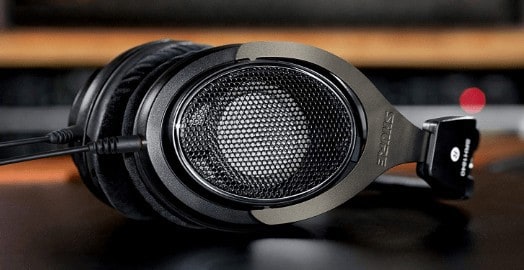
Sound: The headphones contain 40mm neodymium drivers that are tweaked to perform well in the low or bass frequency range. The frequency ranges from 10Hz – 30KHz with these headphones.
The bass is natural and not over-emphasized and they are close to neutral. The mids seem to be very clear and detailed. The treble part seems great and is a pleasure to hear without being harsh.
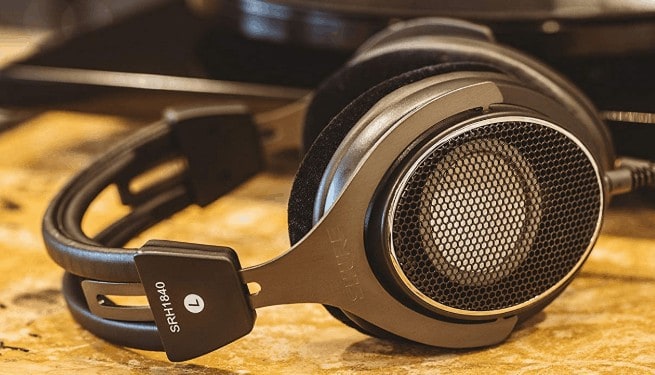
If you want plenty of bass, go for HD 700 as these are almost neutral sounding. If you love flat frequency response for mixing needs, this delights you.
As this is open-back headphones, you can't expect them to be noise isolating. The sound seems spacious and natural. At high volumes, you can get deep into the music without having a clue of what's going on outside.
The vocals are crystal clear and seem very natural. The soundstage is awesome but certainly not as nearer to surround sound headphones.
Comfort: The first thing that contributes to the massive comfort these headphones provide is the large earcups. The earcups truly engulf your ears giving you a good comfort for extended wear during overnight gaming and while watching movies.
They are lightweight when compared to its competitors. The headband is made of leather and offers good comfort and durability. However, the headband is not replaceable.
These headphones are for studio or gaming use. You can't easily carry these on while commuting as the earcups won't swivel or fold.
#2. Sennheiser HD 700

Power: The impedance of these headphones is marked at 150 ohms. That means, your iPhone can't drive these headphones at full potential. A dedicated amp is required for these headphones to offer good bass, details, and soundstage.
Sound: The bass in these headphones is stronger than the Shure headphones that I've reviewed above.
The reason why I didn't include these headphones as the top pick is because the majority of the people who go for open-back headphones are willing to use it for monitoring purposes and also for pure listening.
The lower frequency range has a slight emphasis in these headphones. The bass is quite solid.
When it comes to the mids and treble part they sound as good as Shure SRH1840. The vocals turn out to be natural, crystal clear and warm on your ears. If you've ever used the 700s version, these sound pretty neutral.
The treble is great without any piercing effect. They sound warm and crisp clear.
Comfort: These headphones are very comfortable, that you feel no presence of it after wearing these for some minutes. The thick padding on the ear pads and the headband makes wearing these very comfortable.
There is no clamp pressure at all and the headphones gently rest on your head. They offer just a good fit.
You feel no stress on any particular point due to distributed weight. Even though these headphones are quite heavier than other headphones in this range, they offer great comfort.
Best open-back headphones under $300
#1. Sennheiser HD 600


Power: These are 300 Ohms impedance headphones. These headphones can't be easily driven to the full extent with your iPhone or sound card on your PC. You need an amp to drive these.
As like that of most of the high impedance headphones, these also require some burn-in time like 24 hours to perform to its full extent.
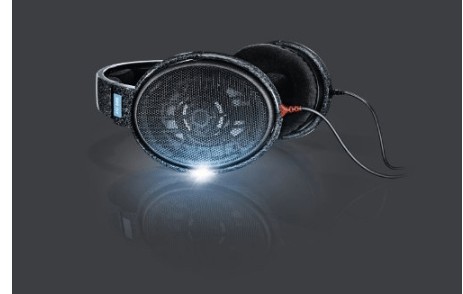
Sound: When you wear these on, the first thing that delights you is the performance of these headphones in the mids.
The vocals turn out crystal clear. The bass is lacking a bit in these headphones than most of the Sennheiser headphones in this range. Nevertheless, it is tight and accurate. If you desire a relatively flat frequency response this is great for you.
Treble turns out to be clear without any distortion. The treble part is not emphasized and is warm.
For the bass and treble to really appeal your ears, you need to turn up the volume level a bit more than your normal level. For studio monitoring applications, I personally think these are the best under $300.
The soundstage is very wide and expansive. You can certainly feel the acoustic space around you. The open-back design of the headphones leak a lot of sound as expected. They won't block external noise.
So in order to get the most of these headphones, use it in a potentially quiet environment.
Comfort: These offer great comfort. However, guys with big heads find it somewhat tight and headband would clamp a little. However, normal heads like mine would enjoy the good comfort provided by these headphones.
The earpads are breathing, allow the air to circulate and prevent any discomfort due to the heat after wearing it for hours. The headphones are lightweight and this adds to overall comfort.
#2. AKG Q701 Premium Class Reference Headphones
Power: The headphone is marked at 62 ohms. This is quite a low voltage requirement. However, these headphones do demand a good amount of current, so using an external amplifier for driving these is recommended if you care about sound quality.
Your iPhone may not be able to drive these at a satisfactory volume to fill the missing details.
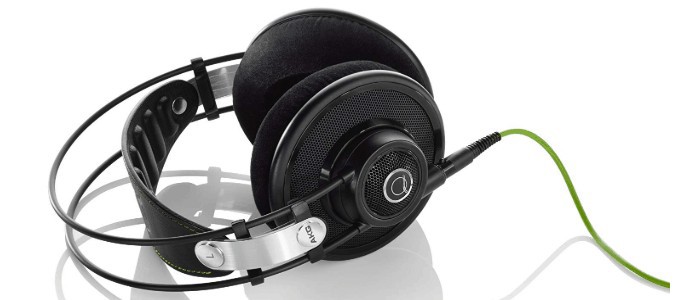
Sound quality: The bass level in these headphones can be compared to that of HD600, that I've reviewed above. The bass is tight and gives fullness to the music. These are not for bass-heads.
As usual with open design headphones, the mids part is very clear and you can hear parts of the music you've never heard before. The most familiar songs appear new due to the level of detail these headphones offer you in mids.
The treble part is bright and not harsh at all. You need to burn in these for around 250 hours, otherwise, the treble may seem shrilled and the headphones may not perform to it's potential. Normally most of the headphones require only about 80-100 hours of burn-in time, these require more.
The soundstage is wide. The vocals seem to be distant in the space due to this. The classical music seems so great to listen with these, as the bass is light and the soundstage is wide.
These do leak a lot of sound in and out. So, this is for home or studio use.
Comfort: These headphones are very bulky. But the headphones are in fact lighter to wear. If you wear glasses that too with a relatively larger frame, you may find it hard to wear these on.
You also find it hard to lie down on your couch wearing these on, as the bulkiness of the headphones changes the position of the ear cups on your ears.
They are quite clamping to large heads. That being said, they are not the most comfortable headphones to wear on in this range.
#3. Philips X2/27 Fidelio
Power: These headphones are marked at 35 ohms. These headphones can be easily driven by your iPhone or mp3 players. However, if you want extra bass you can always use an external amp. However, this does not make a huge difference in the audio quality.
Sound quality: The sound quality of these headphones are almost matchable to that of HD600, that too without the use of any amp.
You may have noticed that the open back headphones most of the time have less bass than you may have desired. But in this case, the bass is just right and strong. This will not satisfy a bass head's never-ending cravings.
With an external amp, the bass seems to get much stronger. The bass is controlled and will not bleed to the mid-range.
The mids are where these headphones really shine like most of the open design headphones. The vocals seem crystal clear. Due to the expansive soundstage, the clarity and details of the vocals are great.
The treble is one of the parts in which this X2 version of the headphones, excel over the previous X1 version. The treble seems to be more controlled and not harsh. Due to the more emphasis on the upper treble in the X2, the sound seems more spatial.
The treble variation contributes to the excellent soundstage and instrument separation effect.
Comfort: The comfort of these headphones is slightly less than that of HD600 I reviewed earlier. Because the headphones seem to clamp a little bit tight. This is quite a big issue for people with big heads.
The velour memory foam pads are soft, breathing, that prevents any heat formation and sweat after wearing these on for hours.
The headband is self-tensioning and does the job of evenly distributing weight over your head very well. Again, comfort is truly subjective and depends upon your head size, positioning, and maybe posture.
Best open-back headphones under $200
#4. Beyerdynamic DT 990 PRO
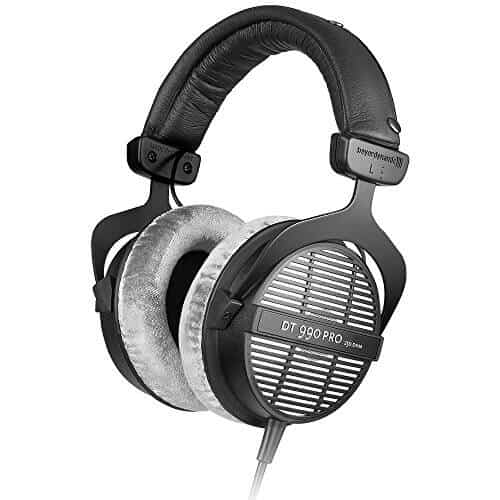
These are the best headphones you can get under $200 for studio monitoring and mixing purposes.
Power: The headphones are marked at 250 ohms. A good amp like FiiO E12 can make a considerable difference in the quality and the volume of the playback. These are not for portable use.
Sound: The bass is great and powerful. The bass is very clear and hard. You will be surprised to notice the good bass in these headphones, in spite of them being open-back headphones. The bass is certainly not overpowering like closed-back bass headphones.
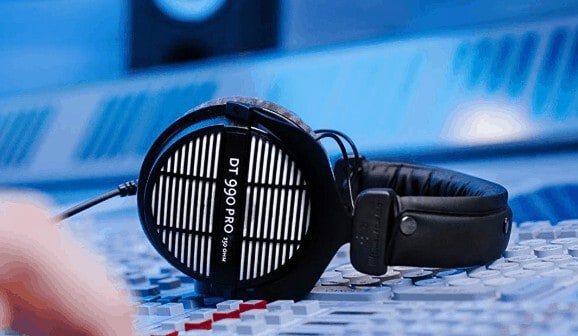
The mids are very clear. The bass and the mids are easily distinguishable. The vocals come alive with these headphones as these have a good soundstage.
This soundstage is great in FPS gaming in precision point of view. The headphones emphasize on clean vocals like other open design headphones in this range.
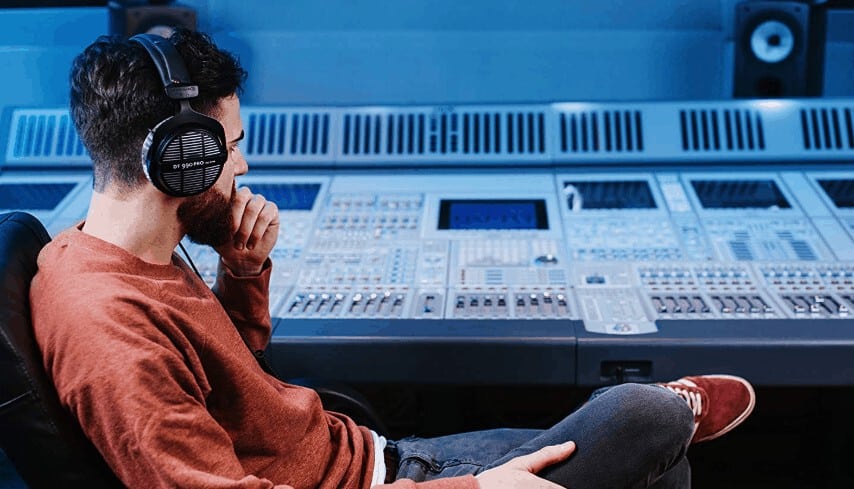
If you are the person who won't love too much treble, you'd love these headphones. The treble sounds good without any piercing effect. The treble is just right. You'll love it.
You do need to note that, like that of other high impedance headphones, these do require a decent burn-in time like 200 hours to perform to it's fullest.
Comfort: Like that of other pro versions of Beyers, this DT990 pro version is also lightweight. They fit just right on your head, without causing any discomfort. The soft velour pads allow plenty of air to circulate keeping your ears cool for extended periods of wear.
Unlike other headphones, there is less clamping effect on your head. After wearing these on for some minutes, you'll forget the fact that you are wearing these on.
The cable may be too long for some of the users.
#2. Sennheiser HD 598
Power: These headphones have an impedance of 50 ohms. You won't need any headphone amp to drive them. All you need is just your iPhone or an mp3 player to drive these easily.
Sound quality: As you may have noticed, Sennheiser's open back headphones are not meant for bass. Although they produce decent bass, it is balanced and tight. The bass isn't punchy and is balanced.
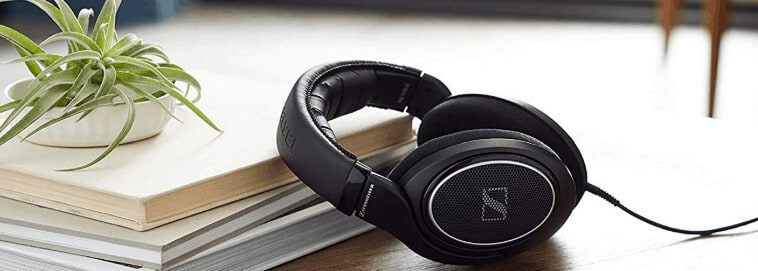
The mids and vocals sound stellar with these headphones on. The excellent soundstage offered by these headphones opens a whole new way of perceiving music. Familiar music turns out to be whole new and pleasant.
The treble part is great and bright. Treble has no harshness in the high levels. The smoothness in the treble range is improved after a burn-in of about 8 hours. After the period, the soundstage turns out to be a little bit more accurate.
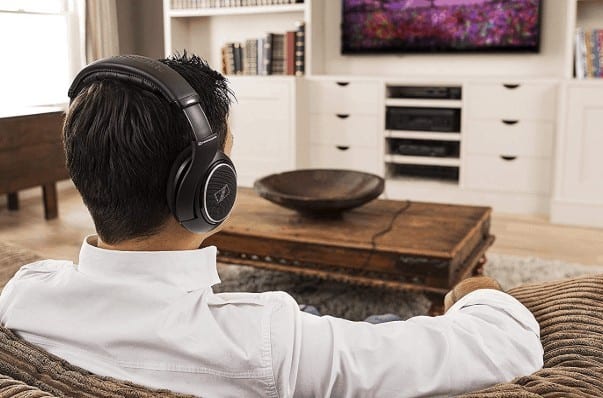
The frequency response is flat, which most of the audiophiles who do monitoring prefer. There is no coloring or emphasis on any particular frequency range.
Comfort: The headphones are extremely comfortable. You forget the fact that you are wearing these on. There's no clamping force. They just fit right in so that they won't fall.
The light and soft headband also contribute to the comfort. The comfort is great for gaming and movie-watching. The breathing soft velour foam allows your ears to be cool even in hot summers.
#3. AKG Acoustics K701

Power: These headphones have 64 ohms impedance. iPhone or a good mp3 player is required for these headphones to drive.
When connected to an external amp, these headphones unveil their full potential. If you are a casual listener or a movie watcher, no amp is required.
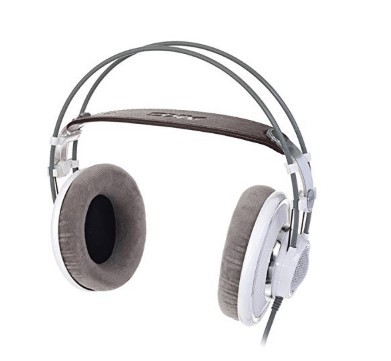
Sound: The bass is decent and not too punchy. The bass lacks a little than that of DT 990 Pro (which have above average bass for open cans).
The bass is tight and not deep at all. If you are a bass lover, these headphones definitely disappoint you.
These headphones require 100 hours of the burn-in period before the clarity of the mids and soundstage opens up. These offer excellent soundstage. The vocals seem to be floating in the acoustic space. The clarity in the mids is excellent.

Due to the excellent soundstage and directional sound, these headphones are great for precision gaming. If you are a gamer, that too FPS gamer, you'll have the ultimate competitive advantage with these.
But these demand silent surroundings like that of all other open cans.
The Treble is the part where these headphones really shine. These headphones are a boon for classical music lovers. The music turns out to be breathtaking. The treble is sharp and turns out to be crisp clear.
As I said earlier, the treble part seems to leak a lot to the surroundings. This is expected and not really a downside considering this to be an open one.
Comfort: The earpads are large and snug comfortably on your ears. They are very lightweight. The headband uses an elastic mechanism, it easily takes the shape of your head without causing clamping on your head. They are the most comfortable headphones out there.
The people who wear spectacles may find wearing these headphones a bit uncomfortable as these are big.
Best open-back headphones under $100
#1. Audio Technica ATH-AD700X

Power: The impedance of these headphones is marked at 38 ohms. So, in order to drive these, you just need a smartphone or a mp3 player. You may use an external amp for getting more volume out of these.
Sound quality: The bass may feel quite lacking in these headphones. But I found that these headphones sound natural and the bass is also natural and present.
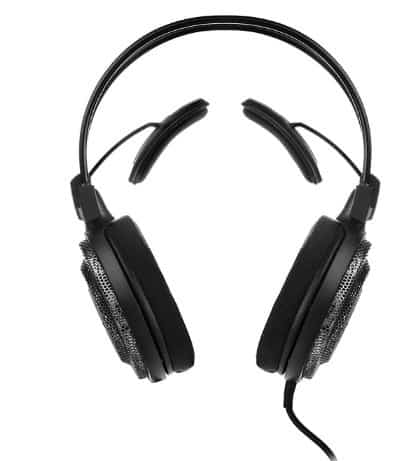
The soundstage offered by these headphones is wide. You will hear the music all around you like in a large hall. This is one of the main things you can expect from open-back headphones.
The vocals and the instrument sounds are separated and clearly distinguishable. At times, you can even hear the details of the breath of the singer.
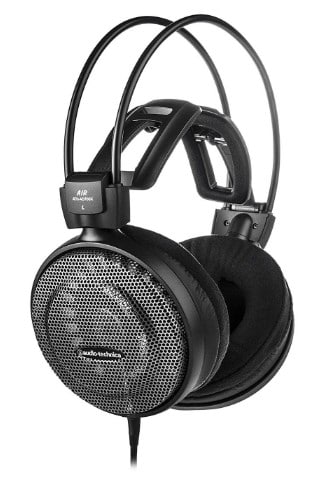
The treble is the part where these headphones truly excel. They can go as high as you wish without causing any muddiness or harshness.
You'll absolutely love it for gaming, as with treble-centric headphones, you'll pay attention to even the slightest detail of the game-play.
As far as music is concerned they are a boon for classical music listeners.
These headphones lack in lower frequency ranges. If you need that booming of explosions in the gameplay, look elsewhere. These sound neutral without any coloring.
Comfort: The ear cups are large and circumaural which means that they snug around your ears with great comfort. You can easily wear these on for 7+ hours straight without any discomfort.
The clamping force of the wings is slightly less, so at times depending upon your posture and head size, the headphones may sag a little.
The headphones are lightweight than they appear and tend to disappear in the thin air!
#2. Grado Prestige Series SR80e
Power: These headphones are marked at 32 ohms. They can be easily driven by an iPhone or any portable mp3 player.
Some audiophiles may find the sound to be a bit better when used with DAC or amp. But for personal use, I think buying a separate amp for these is like burning money.
Sound quality: The bass is present at the right amount. The bass is certainly crispy and punchy. You can feel the good bass and this is great for metal and rock music genres.
The bass is certainly stronger than that of ATH-AD700X I reviewed above. But it's not booming and deep. It's a good amount of bass for open cans like these.
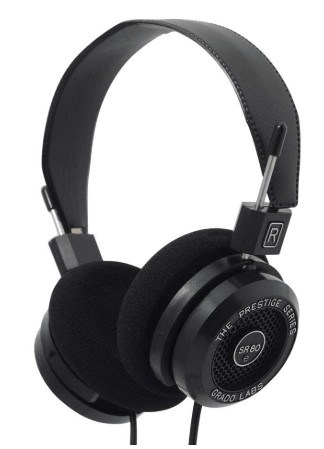
As usual, the mids tend to be crystal clear with great detail. This is the place where almost no good open cans fall short.
These headphones offer fairly a good amount of soundstage and contribute to the detail in the mids. The soundstage is airy than most of the closed back cans, though.
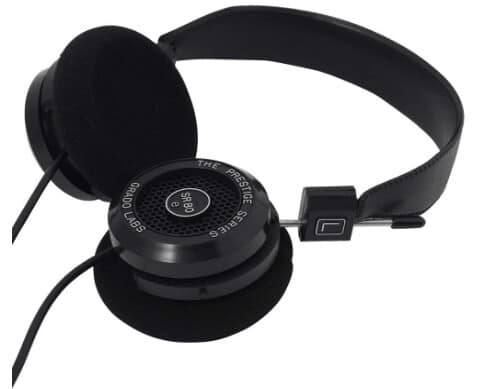
The treble seems to be bright and quite harsh for some people. However, you can EQ down the treble a bit to make it warmer and more pleasant. They are treble forward.
They sound good in almost any type of music genres.
Comfort: The headphones are really light-weight. They would not be felt while wearing at all. Although there's no padding to the headband, it does not put any pressure on your head and cause fatigue after wearing these on for hours.
The earpads are simple foam, which offers good comfort. If you are accustomed to velour pads, you can easily replace the stock earpads.
Personally, I feel the earpad can be of much more good quality. As they are replaceable, I would not worry too much about it.
#3. Philips SHP9500 – Best Affordable Open Back Headphones
Power: These headphones are marked at 30 ohms. This is the lowest of all the headphones that I've reviewed in this article.
This low impedance means that you need no amp at all to drive these. A simple portable player or an iPhone is more than enough for these headphones to perform like a champ.
Sound quality: The sound quality seems to be very surprising for the price. You can't expect good bass out of these as these are open-backed headphones.
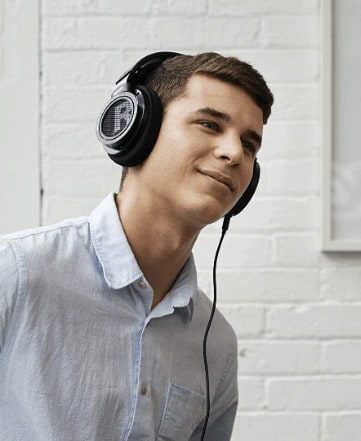
In some bass-heavy songs, the lower-bass tend to distort a bit. However, these sound too good and warm in most of the genres.
The vocals are crisp. But the soundstage is not wide. At least, it's lesser than the Grado SR80E I've reviewed earlier. But nevertheless, it's good for the decent open design headphones.
The soundstage is decent for watching movies and playing games. You can certainly get to know the direction of the sounds.
The sound signature is warm and well balanced. The treble is emphasized a bit. This means the headphones perform well when you listen to the classical music genre. These headphones really shine in the upper treble.
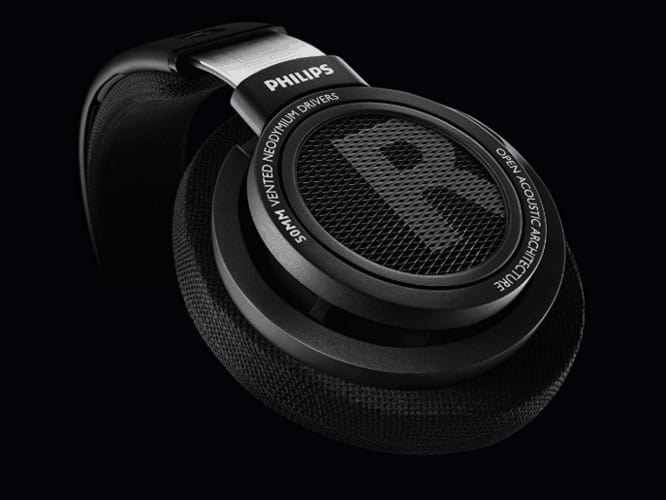
The only major downside I noticed is the little distortion in lower bass range at high volumes.
Comfort: These headphones are very light. The earpads are very soft and breathing. This prevents any itching or heat build up after wearing these on for sometimes. These cans are huge enough to truly engulf your ears and offer good comfort.
The ear cups swivel in either way so that you can easily pack these up while commuting or adjust the position while wearing to get the best sound out of these.

Best open-back headphones under $50
At this range, you won't be probably getting the audiophile quality of the sound. But still, there are some of the good headphones from less-known manufacturers.
#1. Koss UR40 Over-Ear Headphones
Note that these headphones are hybrid headphones that combine the best of open and closed headphones.
Power: With 60 ohms, these Koss headphones are one of the best un-amped open back headphones under 50 dollars. This can be easily driven by any portable devices. Bass-lovers can be slightly benefited by an external amp, but the change is very little.
Sound quality: The headphones frequency response tend to lean towards a good bass. The bass is good when compared to other open back headphones.
At higher volumes, for songs with heavy bass, the bass tends to be a little bit muddy. But not at all for casual non-audiophile listening.
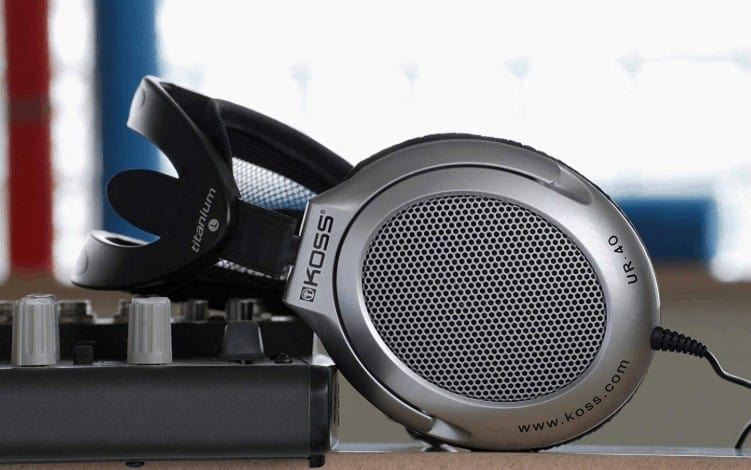
The soundstage is lacking in these headphones. After some burn-in time, soundstage tends to get wider. I'm not sure if that's a placebo effect. With a little EQ settings, the sound quality turns out exceptional.
The vocals are detailed and clear. The lows and mids are emphasized.
The treble part is a bit rolled off. At higher treble you may notice a little hiss sound if you pay enough attention.
But it performs great than any other open cans in this range. This is not at all an issue if your genre is not classical and technos sort of.
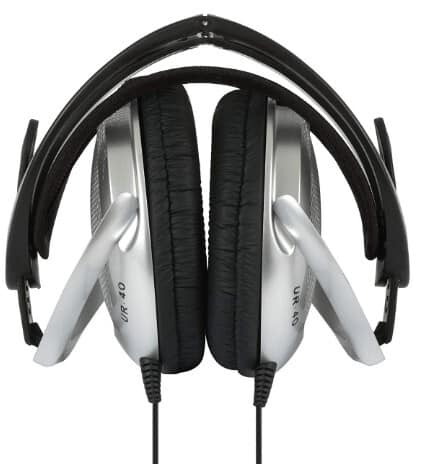
Comfort: The comfort is top-notch. I was wondered by seeing what kind of great comfort these offer for the price. They are lightweight and you feel no pressure at all wearing these on for hours.
But the only little downside is that the leather cushions on the ear pads tend to get warm especially in hot conditions.
As they are collapsible headphones, you can easily fold these and stuff in your bag while commuting. No amp. No hassles.

#2. Lexapro OEH-10
Power: These headphones are marked at 54 ohms of impedance. This can be easily driven by your smartphone. You won't need any amp at all, whatsoever.
Sound quality: The bass is the area where these headphones excel. The bass is tight and powerful. Being an open-backed headphone, this is uncommon.
With stock pads, the bass may be a little muddy. Change the earpads to the felt ones that come along with package. The muddiness will be gone.
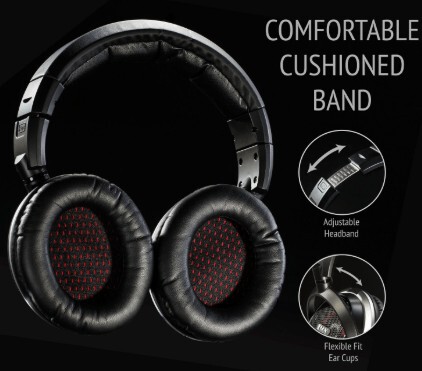
For these headphones to perform greatly, you need to burn-in them for around 7 hours preferably with pink noise. The burn-in is very essential to get the most of these cans.
The mids are clear and detailed. These deliver a natural and bit wide soundstage giving a whole new dimension to the music you listen to.
The treble is also quite good. But the only downside I saw is that the treble is a bit recessed at upper-treble range.
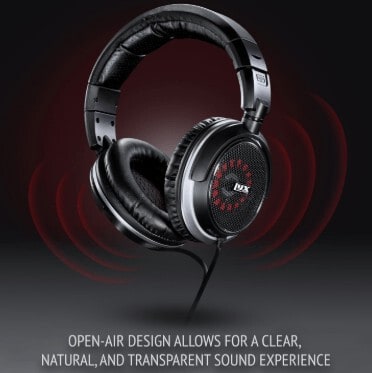
For serious studio monitoring purposes, I would not recommend these. These are great for casual listening.
Comfort: The package comes with both velvet and leather earmuffs. The leather ones are the most comfortable. The headphones are bit heavier than most of the headphones I've reviewed here.
But you hardly feel the weight while wearing due to the weight balancing mechanism that works well.

Wrapping up
You do need to note that, your choice for the best open-back headphones is purely based on your requirements.
Also, note that these headphones are meant to be used in potentially quite environments. These leaks a lot of sound to and fro. For casual use, you may prefer these bass headphones that are great at isolation and sound quality.
The open-back headphones are great for mixing, gaming and watching movies.
Hope you loved this guide on best open-back headphones.


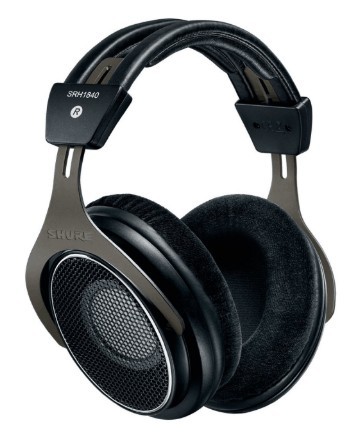









1 Comment
Good open headphones. I really liked BEYERS DT990.